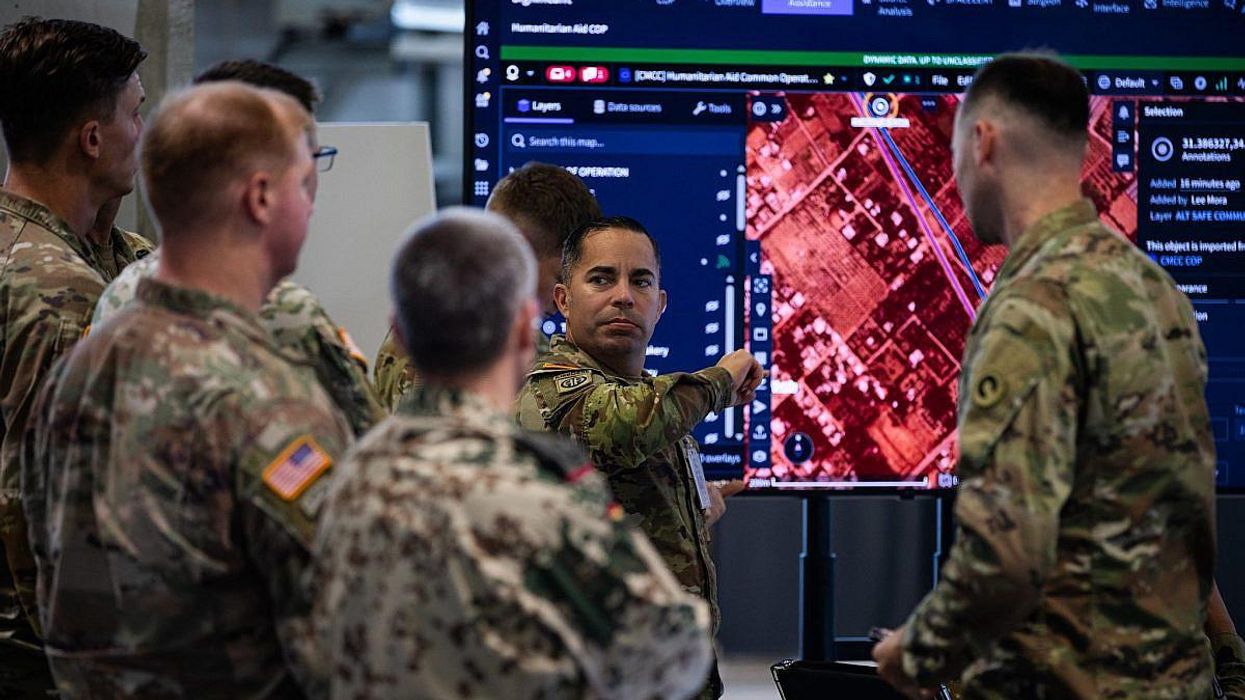“Busification” is a well-understood term in Ukraine and refers to the process in which young men are detained against their will, often involving a violent struggle, and bundled into a vehicle — often a minibus — for onward transit to an army recruitment center.
Until recently, Ukraine’s army recruiters picked easy targets. Yet, on October 26, the British Sun newspaper’s defense editor, Jerome Starkey, wrote a harrowing report about a recent trip to the front line in Ukraine, during which he claimed his Ukrainian colleague was “forcibly press-ganged into his country’s armed services.”
This case was striking for two reasons; first, that the forced mobilization of troops is rarely reported by Western mainstream media outlets. And second, that unlike most forced conscriptions, this event took place following the alleged commandeering of the Western journalists’ vehicle by three armed men, who insisted they drive to a recruitment center.
There, Starkey reported, “I saw at least [a] dozen glum men — mostly in their 40s and 50s — clutching sheafs of papers. They were called in and out of side rooms for rubber-stamp medicals to prove they were fit to fight.”
The process has drawn criticism after high-profile incidents where men have died even before they donned military uniforms. On October 23, Ukrainian Roman Sopin died from heavy blunt trauma to the head after he had been forcibly recruited. Ukrainian authorities claim that he fell, but his family is taking legal action. In August, a conscripted man, 36, died suddenly at a recruitment center in Rivne, although the authorities claim he died of natural causes. In June, 45-year-old Ukrainian-Hungarian Jozsef Sebestyen died after he was beaten with iron bars following his forced conscription; the Ukrainian military denies this version of events. In August, a conscript died from injuries sustained after he jumped out of a moving vehicle that was transporting him to the recruitment center.
Look online and you’ll find a trove of thousands of incidents, with most of them filmed this year alone. You can find videos of a recruitment officer chasing a man and shooting at him, a man being choked to death on the street with a recruiter’s knee on his neck. Many include family members or friends fighting desperately to prevent their loved one being taken against his will.
If videos of this nature, on this systemic scale, were shared in the United States or the United Kingdom, I believe that members of the public would express serious concerns. Yet the Western media remains largely silent, and I find it difficult to understand why.
In November 2024, Ukraine’s defense minister Rustem Umerov claimed that he would put an end to busification. It is true that Ukraine has been taking steps to modernize its army recruitment and make enlistment more appealing to men under the age of 25. Yet, there is little evidence that those efforts are having the desired effect. And after a year, busification only appears to be getting worse, yet remains widely ignored by the Western press.
The Washington-based Institute for the Study of War often reports on Russian force mobilization efforts but not on the dark and desperate aspects that lead to busification. You won’t find reports on this in the New York Times, as it conflicts with the narrative that with support from the West, Ukraine can turn the war around. It leans in instead on stories like Ukraine’s points for drone-kills game or the designer who cut the all-black suit that Zelensky now wears. Meanwhile, the Washington Post is softly banging the drum to recruit 18-year-old Ukrainians, despite this being a toxic political issue in Ukraine.
This is because busification is the tip of the iceberg. If the Ukrainians are finding it difficult to encourage young men to join the army voluntarily, then it is proving even harder to make them stay without deserting.
In January 2025, it was reported that around 1,700 troops of the Anna of Kyiv 155th mechanized brigade, trained in France and equipped with French self-propelled howitzers, had gone AWOL — 50 of them while still in France. In June 2024, a Ukrainian deserter was shot dead by a border guard while trying to cross into Moldova.
In the first half of 2025, over 110,000 desertion cases were reported in Ukraine. In 2024, Ukrainian prosecutors initiated over 89,000 proceedings related to desertion and unauthorized abandonment of units, a figure three-and-a-half times greater than in 2023. More than 20% of Ukraine’s one million-strong army have jumped the fence in the past four years, and the numbers are rising all the time.
Desertions appear in part driven by ever-greater shortages of infantry troops at the front line, which means soldiers rarely get rest and recuperation breaks. A lack of sufficient equipment is often blamed. And of course, the widespread and rising desertion rates from Ukraine’s armed forces only seem to provoke more violent recruitment practices and then civilian protests. On October 30 in Odessa, a group of demonstrators against a man’s forced detention overturned the recruitment minibus.
The growth of busification and rising desertions also track with a growth in support among ordinary Ukrainians for the war to end. Support for a negotiated end to the war has risen from 27% in 2023 to 69% in 2025. Likewise, support for Ukraine to “keep fighting until it wins the war” — a wholly deluded proposition — has dropped from 63% to 24% over the same period, according to Gallup poll results.
President Zelensky often claims that Ukraine’s military predicament is linked to a lack of guns, not a lack of people. Hoping to secure Western support to fight on for another 2-3 years, he’s quiet on whether he will have the troops or the political support to do so. For now, the message seems to be, “Don’t mention the press-gangs, in-detention killings, deserters and waning public support: just give me more money.”
















